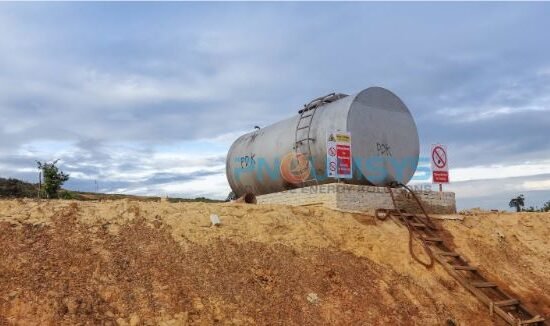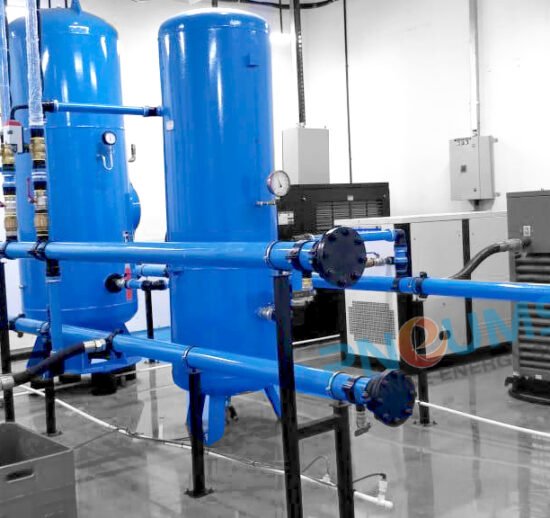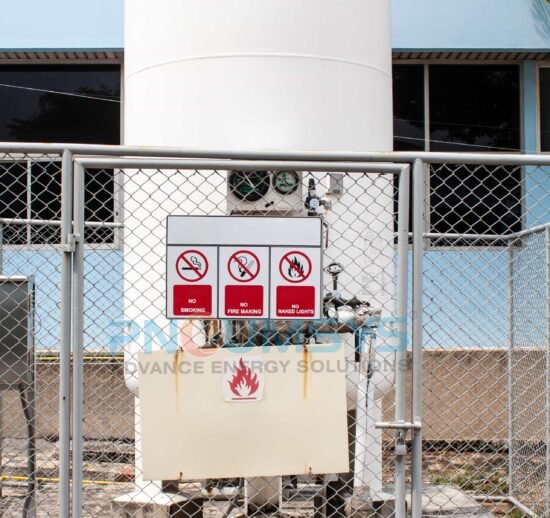They are simple to install and are 30 times lighter than concrete and four times lighter than steel.
Furthermore, storage tanks are versatile and can be utilized for a variety of purposes, including water supply to mining sites, fire prevention, sewage treatment, and clean water storage.
PNEUMSYS ADVANCE ENERGY SOLUTIONS handles all aspects of storage tank engineering, manufacturing, transportation, and installation. Our goods are delivered fully assembled.
Aboveground bulk storage facilities are extremely valuable in a variety of ways, particularly because leaks in these types of storage tanks are considerably easier to discover than leaks underneath. Here are some of the advantages of employing aboveground bulk storage solutions that businesses should consider incorporating into their operations.
COST-EFFECTIVE, DURABLE AND PRACTICAL
Bulk storage solutions, on the other hand, are low-cost storage applications that require no maintenance.
There is no need for seal replacement or repainting because fiberglass, unlike steel, does not rust.
Furthermore, unlike concrete, fiberglass is a well-built and robust material that does not decay. UV rays are also protected by bulk storage options.
TANKS THAT WORK WELL UNDER ALL CONDITIONS
Bulk storage systems for industrial purposes appear to be installable both indoors and outside.
However, with approximately ground segregated tanks, stored liquids may be easily heated and maintained warm. There are additional non-isolated tanks for different applications.
Storage tanks perform well in all types of situations, regardless of where they are situated. They need minimal installation effort, either on a concrete slab base or a crushed stone surface, reducing the need for excavation into permafrost or difficult ground.
STORAGE CAPACITIES
Bulk storage systems for above-ground industrial applications racks, as the name implies, have a lot of storage space. A single bulk storage shelf can hold the contents of several smaller shelves. Depending on the circumstances, you may be able to replace your smaller racks entirely.
Containment Requirements
Secondary containment criteria are divided into two categories: general and specific.
To begin, basic secondary containment standards cover the most likely oil discharge from a plant; particular secondary containment requirements handle a catastrophic container or tank failure.
Furthermore, all facilities must comply with the basic secondary containment criteria, while bulk storage containers and tanks must additionally comply with the specialized containment requirements.
Examples of general secondary containment are:
- Dikes, berms, retaining walls, and curbing are all examples of impervious dikes.
- Culverts, gutters, and other drainage systems, such as storm water retention ponds
- Weirs or dam-like structures are commonly utilized in conjunction with skimmers.
- To recover fluids, booms and sorbent materials are utilized.
- Spill mats and storm drain covers are examples of barriers.
- Drip pans are commonly used in conjunction with product dispersing and uncoupling hoses.
Within sight, certain types of containers or activities are subject to additional, more rigorous specialized containment standards.
In general, the specific containment provisions call for confinement to be large enough to catch the volume of the single largest compartment or container, plus enough freeboard to allow for precipitation.
The sections that follow summarize the secondary containment requirements for oil-containing devices like:
- Tanks and bulk storage containers
- Containers that are mobile or portable
- Operational equipment containing oil
- Oil-filled manufacturing machinery
- Mobile refueling trucks
The utility of Bulk Storage Containers and Tanks
Bulk storage containers are defined as any container used to store oil with a volume of 55 gallons or greater.
In addition to the general containment requirements outlined above, each facility must meet unique secondary containment and additional bulk storage container criteria, such as:
- Containment large enough to accommodate the whole volume of the largest single container or tank, with enough freeboard to keep precipitation out. This is the average quantity of precipitation from a 25-year storm that lasts 24 hours.
- Spilled oil is contained in places that are sufficiently impermeable.
- To keep rainfall contained until it can be assessed for impurities and discharged under supervision, bypass or release values must be maintained closed (note: the draining of rainwater from containment must be documented).
- Visually inspect the container’s outside for signs of degradation and leaks. Tank supports and foundations should be inspected as well.
- Hydrostatic testing, radiographic testing, ultrasonic testing, acoustic emissions testing, and other non-destructive shell thickness testing should be performed on a regular basis.
- Following tank repairs, integrity testing is performed.
- Repair apparent leaks as soon as possible.
- Repair observable leaks caused by tank seams, gaskets, rivets, and bolts as soon as possible.
To prevent spills, we install one or more of the following level gauging systems and alarms in tanks:
- High-level warnings
- High-capacity liquid pump cut-off devices
- The communication system that connects the tank gauger with the pump station.
- Digital computers, telepulse systems, and visual gauges are examples of liquid level meters.
- Liquid-level sensing apparatus (should be regularly tested for proper operation)
- Other gadgets that offer comparable protection (such as relief valves and overflow lines)
Bulk storage racks promote categorization of products.
Because bulk storage solutions have a big storage capacity, you may store products of the same type on a single shelf, giving effective product placement and an easier way for people to evaluate different products in the same category.
It will be easier for shoppers to stay in one area and compare a large number of products on a single shelf rather than having to walk the entire aisle





